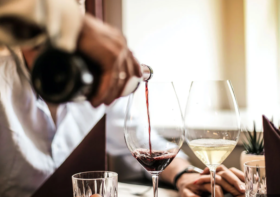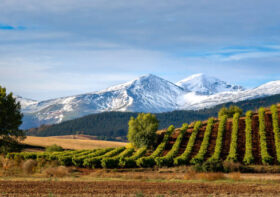How to Hack a Wine Label


Cracking the Code: A Sommelier’s Guide to Hacking Wine Labels (Without Needing a Secret Decoder Ring)
Let’s face it, wine labels can be more confusing than a teenager’s text messages. They’re filled with fancy words, obscure regions, and cryptic symbols that leave you wondering if you accidentally picked up a bottle of fermented unicorn tears. But fear not, intrepid wine enthusiast! I’m here, your trusty sommelier sidekick, to help you decipher those labels and choose a bottle you’ll actually enjoy.
1. The Name Game: Don’t Judge a Wine by its Label Alone (But it Helps!)
The winery name can be a clue to the wine’s style and quality. Big, well-known names usually mean a safe bet, but don’t be afraid to venture off the beaten path. Smaller, lesser-known producers often offer hidden gems at a fraction of the price. Just be prepared for a potential adventure – it could be the best wine you’ve ever tasted, or it could taste like fermented gym socks.
2. Grape Expectations: The Varietal Tells the Tale
If you know your grape varieties, you’re already halfway there! Look for familiar names like Cabernet Sauvignon, Pinot Noir, Chardonnay, or Sauvignon Blanc. If you’re feeling adventurous, try something new like Grüner Veltliner, Albariño, or Aglianico. Just be sure to Google it first, you don’t want to end up with a mouthful of something you can’t pronounce.
3. Region: Location, Location, Location
The region where the grapes were grown can tell you a lot about the wine’s style. Think of it like a wine’s hometown – it shapes its personality. Wines from warm climates tend to be riper and fuller-bodied, while those from cooler climates are often lighter and more acidic. Do a little research on different regions to find ones that match your taste buds.
4. Vintage: The Year that Makes a Difference
The vintage, or year the grapes were harvested, can impact a wine’s quality and flavor. Some years are better than others, depending on weather conditions and other factors. If you’re unsure, ask your friendly sommelier or do a quick online search for vintage charts. But remember, a good winemaker can make a decent wine even in a challenging year.
5. Alcohol Percentage: The Higher the Number, the Bigger the Buzz
The alcohol percentage (ABV) is a good indicator of a wine’s body and intensity. Wines with higher ABV tend to be fuller-bodied and more alcoholic, while those with lower ABV are usually lighter and more refreshing. Keep in mind that alcohol levels can vary depending on the grape variety and region.
6. Fancy Words: Don’t be Intimidated
Wine labels are notorious for their use of flowery language and obscure terms. Don’t let it scare you! Most of it is just marketing fluff. If you see words like “reserve,” “old vine,” or “single vineyard,” it usually means the wine is supposed to be of higher quality (and price). But don’t take it as gospel, taste is subjective!
7. The Back Label: The Hidden Treasure Trove
Don’t forget to flip the bottle over! The back label often contains useful information about the wine’s flavor profile, food pairings, and even the winemaker’s story. It’s like a mini-cheat sheet for choosing the right bottle.
Bonus Tip: If all else fails, just pick the bottle with the prettiest label. At least it’ll look good on your Instagram feed.
Remember, the most important thing is to have fun and experiment. Don’t be afraid to step outside your comfort zone and try something new. You might just discover your new favorite wine! Cheers!


Leave a Reply